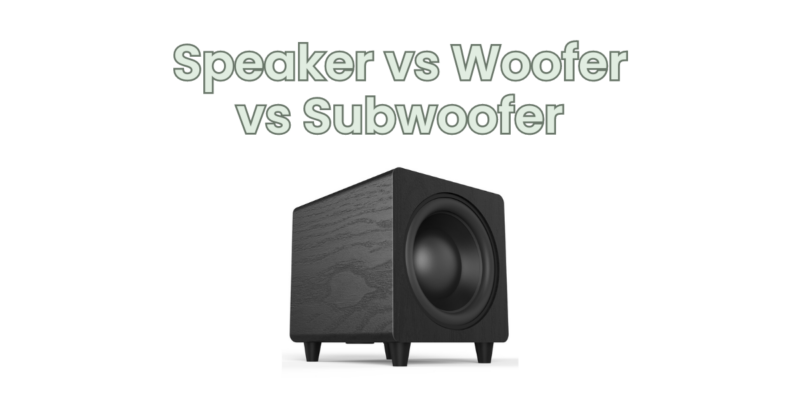When it comes to audio systems, understanding the differences between speakers, woofers, and subwoofers is essential to create a well-balanced and immersive sound experience. Each of these components plays a specific role in reproducing different frequency ranges and has its own unique characteristics. In this article, we will explore the differences between speakers, woofers, and subwoofers, as well as their respective applications.
Speakers: Speakers are the most common and versatile audio components in any audio system. They are designed to reproduce a wide range of frequencies, including low, mid, and high frequencies. Speakers consist of multiple drivers, each responsible for reproducing a specific frequency range. These drivers typically include a woofer for low frequencies, a midrange driver for mid frequencies, and a tweeter for high frequencies. Speakers are used in various audio setups, including stereo systems, home theaters, and car audio systems. They provide a balanced sound reproduction across the entire frequency spectrum, ensuring accurate and detailed audio playback.
Woofer: A woofer is a type of speaker driver specifically designed to handle low-frequency sounds, typically ranging from around 40 Hz to 1 kHz. It is responsible for producing deep bass notes and delivering impactful low-end performance. Woofer drivers are larger in size compared to midrange drivers and tweeters, allowing them to move more air and generate powerful bass. Woofer drivers are commonly found in multi-driver speaker systems, where they work in conjunction with midrange and tweeter drivers to provide a full audio range.
Subwoofer: A subwoofer is a specialized speaker designed solely to reproduce extremely low-frequency sounds, specifically deep bass notes. Subwoofers focus on frequencies below 100 Hz and can reach down to sub-bass frequencies below 20 Hz. They are dedicated to enhancing the low-end performance of an audio system, providing deep and impactful bass that can be felt as much as it is heard. Subwoofers typically come in larger sizes, ranging from 8 to 18 inches, and utilize powerful amplifiers to drive the drivers. They are commonly used in home theaters, car audio systems, and professional audio setups to create a more immersive and dynamic sound experience.
Key Differences:
- Frequency Range: While speakers cover a wide frequency range, including low, mid, and high frequencies, woofers and subwoofers focus specifically on low-frequency sounds. Woofers handle a broader range of low frequencies, while subwoofers are dedicated to the deepest bass notes.
- Size: Woofers are larger than midrange drivers and tweeters but smaller than subwoofers. Subwoofers are typically the largest speaker component in an audio system, allowing them to move more air and produce powerful bass.
- Purpose: Speakers are designed to provide a balanced sound reproduction across the entire frequency spectrum. Woofers enhance the low-frequency performance in multi-driver speaker systems. Subwoofers specifically focus on delivering deep bass, adding impact and depth to audio playback.
- Amplification: While speakers and woofers can be driven directly by the audio system or amplifier, subwoofers often require dedicated amplification due to their power requirements and the need for precise control over low-frequency reproduction.
Applications: Speakers: Used in various audio setups, including stereo systems, home theaters, and car audio systems.
Woofers: Found in multi-driver speaker systems, providing enhanced low-frequency performance and fuller sound reproduction.
Subwoofers: Used to create a more immersive audio experience, specifically in home theaters, car audio systems, and professional audio setups where deep bass is desired.
In summary, speakers, woofers, and subwoofers each serve different purposes in audio systems. Speakers offer balanced sound reproduction across the frequency spectrum, woofers enhance low-frequency performance in multi-driver systems, and subwoofers deliver deep and impactful bass. Understanding their differences and applications can help you choose the right components for your specific audio needs and create a more immersive and enjoyable listening experience.


